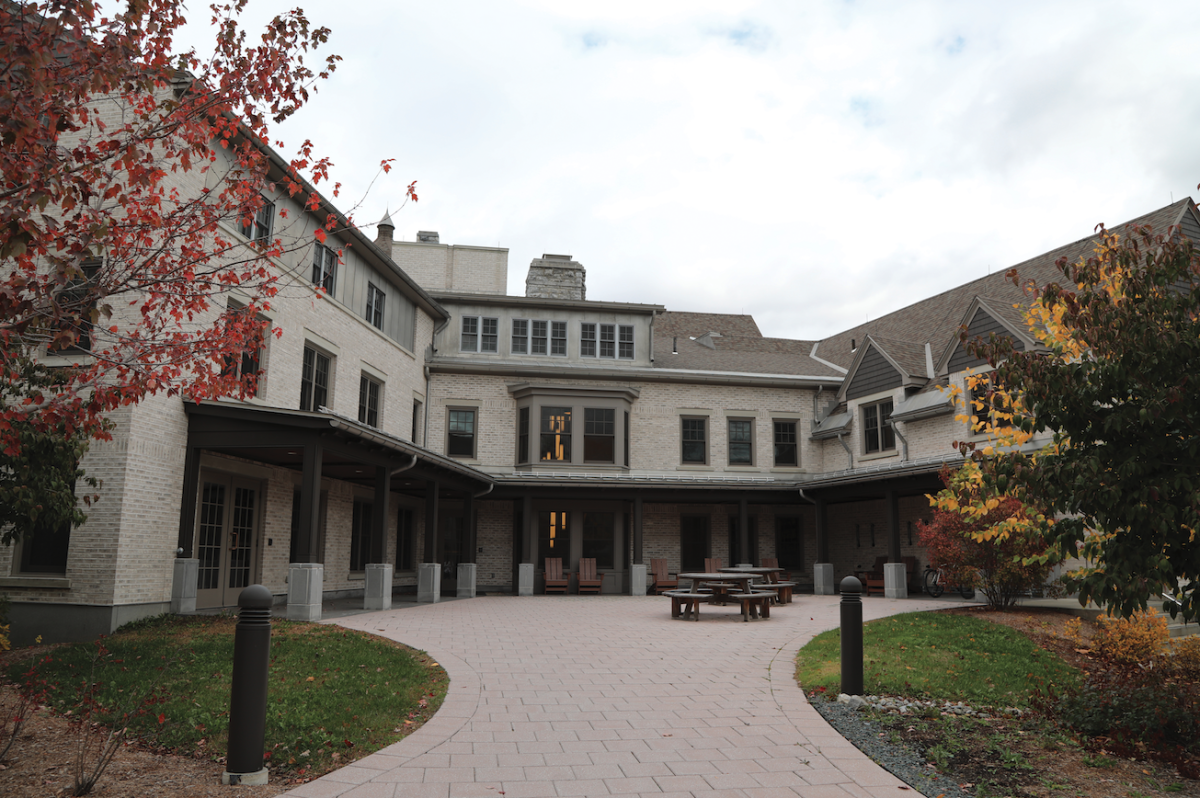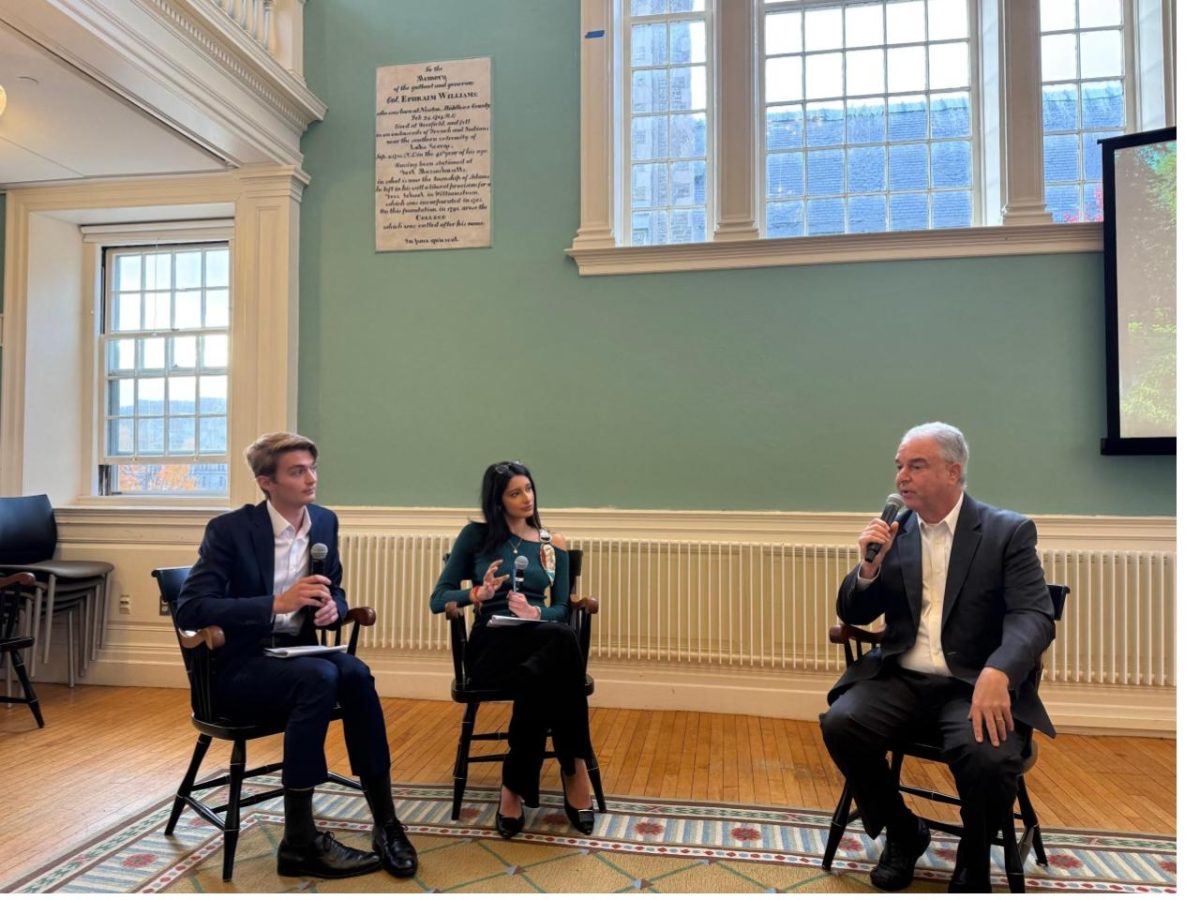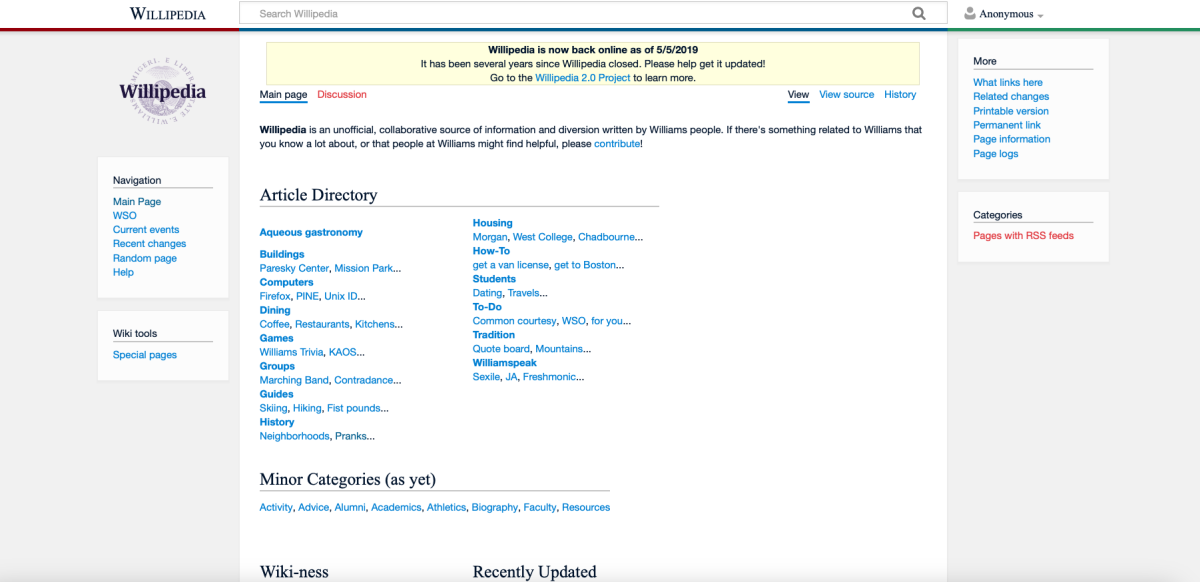
This article is the second in a two-part series on Integrative Wellbeing Services (IWS). The first focused on how IWS services and staff have expanded since 2016.
One of Wendy Adam’s main goals since becoming director of IWS in 2016 has been to diversify her team of clinicians to match the demographics of the student body. Staff Therapist Michael Grinnell, who came to the College in August 2018 through its two-year fellow program, said those efforts reflect similar trends nationwide.
“Across the country, mental health services are trying to diversify their staff,” he said. “This year, we have seven or eight therapists who identify as people of color. When I got here last year, there were four. IWS has been very intentional about trying to diversify staff so it can be more representative of the student population, which has not always been the case.”
Staff Therapist Karen Theiling, who has been on IWS staff since 1999 and at the College in other roles since 1991, said the staff used to be much smaller, and the student body was relatively homogenous.
“When I did my internship here, there were only four other people on staff,” she said. “The dominant perception of the student body then was of material plenty, privileged backgrounds, private schools, et cetera. Williams was much whiter.”
Grinnell stressed the importance of being able to adequately address the needs of an increasingly diverse student body.
“There can be a lot of value in working with therapists who hold similar identities to you,” he said. “Oftentimes, people will seek out a level of comfort that comes from working with someone who shares a sexual orientation, or gender identity, or racial background.”
Theiling agreed. “Depending on where I am in my life, I might want to talk to someone that I know is going to understand me because they share my experience,” she said. “It’s not always necessary, but sometimes it’s really important. I think having a more diverse staff helps students feel like we’re going to understand where they’re coming from. As therapists, we need to always be taking in the person who’s across from us without preconceptions or too many assumptions.”
Grinnell noted that assembling a truly diverse team of clinicians is not an easy task.
“I think having a therapeutic staff that can meet every single identity of the students at the institution is the goal,” he said. “But there’s a number of obstacles that can keep that from happening, not just here, but across the board.”
He drew from his own experience as a person of color who chose to come to the Berkshires from a very different environment. “One of the barriers was the location,” he said. “I was born and raised in Minnesota, and then lived in D.C. and Boston… I would say it’s a shared barrier for students coming out here from their respective locations.”
Adam said she tries to be very open during the hiring process about the potential drawbacks of moving to the Berkshires, especially for people who hold marginalized identities.
“There are ways that living in this community can be really hard,” she said. “We tell applicants that some staff of color experience isolation here, that there can be difficulties in accessing larger communities of color. When a staff person chooses to come here, I know in my heart of hearts that they’re choosing to gain a lot, but they’re also choosing to sign up for some things that are very difficult. My commitment is to create a safe space for them to bring that to our team, and then to offer support so that they can continue to pursue what they need in order to take care of themselves as people.”
For Grinnell, one of the main reasons he chose to come to the College was the unique opportunity offered by the two-year fellow program. He said the quality of the teaching here, combined with the benefits of the position, made the move worthwhile.
“I knew that the training here was going to be very thorough and detailed, and I wanted to develop my competence as a therapist,” he said. “It was kind of like falling off the grid, but I was willing to make the leap for this training program.”
Theiling said the fellow program offers an unusually appealing set of incentives.
“Most internships during master’s-level training aren’t paid,” she said. “Having paid post-graduate fellowships is good for the fellows, because we do lots of active teaching while they’re here, and I believe they are paid at what one makes in an entry level position prior to licensure. The fellowship program is one way we can bring more diversity to IWS in a way that’s also helpful for the fellows on their career path.”
The fellow program allows postgraduates to complete the training and log the clinical hours necessary to obtain their professional licenses, at which point some, like Grinnell, choose to stay at the College as full-time clinicians.
“During the two years, fellows can be exposed to Williamstown, perhaps start to make some connections here, so that then choosing to stay as a staff person could be a viable choice,” Adam said. “But it is hard, and I think my goal is to build a team that feels like community to all of our staff.”
Grinnell said he has come to feel a strong sense of belonging during his time at the College. “I’ve worked in residential placements, in middle schools, for the government, but of all my placements, this is where I feel most supported, like my voice matters.”
Though the IWS staff itself forms a close-knit community, information about individual clinicians can be difficult to access. Unlike many of the websites for mental health centers at the College’s peer institutions, the IWS “Who We Are” page currently has no information on therapists’ personal backgrounds, educational histories, areas of expertise or occupational experience.
Megan Siedman ’20 said she would have appreciated more information ahead of time about the therapists she might be matched with.
“You’re supposed to go through this process where they basically randomly assign you to this person, and you just have to hope for the best,” she said. “I think profiles of the therapists would be really helpful.”
Siedman experienced a severely traumatic life event during the summer before her junior year. When she arrived on campus for junior advisor training, she scheduled an appointment at IWS and asked for support from the dean’s office. She found the first session profoundly upsetting and decided not to see that therapist again.
Siedman met several times with a different clinician, but was similarly frustrated by their approach. She said she felt her sessions at IWS up to that point were unhelpful at best and damaging at worst.
“I’ve seen a therapist back home since I was a junior in high school,” she said. “I know therapy can look really, really different.”
She presented her concerns to the dean’s office and worked with them to identify attributes she would find helpful in a therapist. The third clinician she was paired with proved a better match, and Siedman worked with them for the rest of the semester. She said one of the things that set the third therapist apart was their understanding of what it was like to come from a disadvantaged background.
“Some of [the first two therapists] didn’t seem to understand how it was a different experience to be poor at Williams than rich,” she said.
Charlotte Jones ’22 started seeing a clinician at IWS last year while continuing to regularly check in remotely with the therapist she has worked with for several years at home. She hoped to use the IWS sessions to process recent traumatic life events, but both of the therapists she was paired with took approaches that she found unhelpful.
“At times, it felt as though they were babying me,” she said. “It could be very demeaning… Maybe they would have been fine for a smaller issue, but for me, they were not ready to handle what I had.”
She said that she does not plan to try again at IWS – “Two times was hard enough,” she said – though she has found the crisis call line helpful for instances when she could not get in touch with her therapist from home.
Grinnell said that a student who has experienced trauma should reasonably be able to expect to have the option to meet with a therapist who has more extensive training in that area.
On the other hand, he also said it is important for students to keep in mind that, regardless of their situation, it may take some time to find a clinician who is right for them.
“I want to normalize the fact that not every therapist is going to be a great match and fit,” he said. “Something that I do, during an initial intake – the first time I meet with the student – is to put on their radar that because you’ve been intentional about coming to IWS and seeking support, if you ever feel as though I’m not a good match for you, you do have the option to switch therapists.”
He stressed the importance of making that decision early rather than continuing to endure unproductive sessions in the long term.
“I’m not for everybody, and everybody’s not for me, and if I’m not meeting their needs, that can be really damaging – to feel like I’ve been intentional about getting support and I have a therapist who doesn’t understand me,” Grinnell said.
Unless students request to work with a specific therapist – which is only possible if students have met with a particular clinician before or heard about them via word-of-mouth – pairing is done on the basis of availability. IWS is currently in the process of assembling profiles of the staff members so that more information about individual clinicians is accessible online.
The “Who We Are” page on the IWS website makes clear that it employs only one psychiatrist. As with other clinicians, though, there is no waitlist to see the psychiatrist.
“Even with this very busy start of the year, a first time full-hour evaluation session is generally scheduled in one week, and students needing follow-up ‘med check’ type appointments can be scheduled sometimes within the same day and always within the same week, if needed,” Adam said. “Again, there may be some constraints based on students’ schedule preferences, but we do not currently have a substantive waiting list to meet with our psychiatrist.”
IWS is also pursuing new initiatives aimed at increasing access to mental health services, including a partnership with the teletherapy company Talkspace. Dean of the College Marlene Sandstrom announced the service in a campus wide email last month: “Talkspace connects users to a dedicated, licensed therapist from a secure, HIPAA-compliant mobile app and web platform. Their roster comprises more than 5,000 licensed clinicians from across the country, who collectively speak over forty languages. You can send your therapist a text, voice or video message anytime, from anywhere, throughout your time at Williams.”
Talkspace will be available to students year-round at no cost, including during the summer and semesters studying away. Adam said she hopes Talkspace will allow students to continue to have access to mental health services during those periods.
“We realized that some students might be coming to therapy here for two years, but then travel abroad and suddenly won’t have access to anything in the same way,” she said. “We also know a lot of our students who see us during the year might not have access when they’re at home. Those two groups were really standouts in how can we get some services that will continue that care.”
This initiative marks the first time Talkspace has partnered with an educational institution. “We’re the first college to offer it to every student throughout their entire time here, even when they’re not in school, and that’s unprecedented,” Adam said.
She said she sees this as the latest development in an ongoing effort to widen access to mental health services. “We’re trying to think much more broadly about developing wellbeing as a skill set, and reaching out to students who would never physically come in for psychotherapy,” she said. “We want to develop skills in students that will allow them to thrive.”








